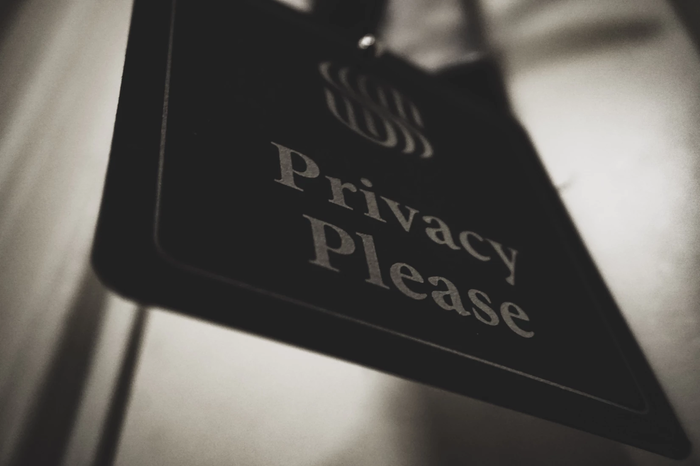Overview: how to reduce the likelihood of personal data leakage

Six years have passed since Edward Snowden’s revelations, but the privacy situation on the Internet is not getting any better. Intelligence agencies around the world still seek to find out as much information as possible about ordinary users of the network, and cybercriminals seek to use this data for personal gain. Plums regularly appear about new global surveillance programs, botnets from hundreds of thousands of hacked home devices.
And although it is clear that it is unlikely that you can fully protect privacy if the special services are interested in you, there are still means to reduce the likelihood of leakage of your data into the hands of government agencies and attackers from around the world.
Encryption tools
Tools that allow users to encrypt data and communications are not popular with intelligence agencies around the world. They look for vulnerabilities in encryption algorithms, implement backdoors in them, try to block access to such services. A single guarantee of protection will not give any tool, however, their combination can significantly reduce the likelihood of leakage of your personal data. Here are which ones to use:
- Install Tor and VPN (I use iNinja ), always use them for web surfing.
- For email communications, use encrypted clients like ProtonMail .
- Files on disk can be encrypted using FileVault for Mac and BitLocker for Windows .
- Use instant messengers that allow you to encrypt correspondence ( Signal , Telegram ).
Internet restrictions for different gadgets
The development of the Internet of things is convenient on the one hand, and on the other hand more and more devices are now connected to the network, and even those who do not really need this. Smart TV, baby monitors, webcams - all of these devices can be hacked, often remotely and at no cost.
Studies show that developers of plug-in gadgets do not really care about security and leave a lot of vulnerabilities in the firmware, including wired passwords by default - you don’t need to be a hacker to read them in the documentation, find a device sticking into the network via Shodan and take complete control over him. As a result, situations are possible when crackers managed to spy on families who used baby monitors, and even talk to children through the built-in microphone or take pictures of them and upload pictures to the network.

One of the leaked snapshots.
Security researchers have found that passwords about 15 out of 100 devices never changed from the default values. And knowing only the five most popular pairs, you can access the “admin panel” of every tenth device:

Popular standard logins / passwords, which are set by default by manufacturers of IoT devices.
Since you cannot affect vulnerabilities of this kind, the only way out is to disable access to Internet for all devices that do not need it to perform basic functions. If a smart refrigerator can cool food without connecting to a network - let it work.
Install Updates
It is amazing how many people do not follow this simple but effective advice. According to statistics, the average age of the firmware on an average home router is 3-4 years. During this time, dozens of vulnerabilities are found in them, including critical ones. As a result, anyone who wants to penetrate the home network does not need to make an effort, but simply use the exploit to an already known error.
Installing updates is not the most fun activity in the world, but it really increases the level of security.
Security cannot be exchanged for convenience.
Mostly this tip implies limited use of cloud services. You cannot be sure of the security of your data and files if they are not stored on your server, somewhere in the cloud. Even in the event of a leak from a personal server, tracking its source will be easier.
US intelligence agencies and other countries use Internet traffic filtering systems, so data sent to the cloud services can be intercepted.
Use services and tools with a focus on privacy.
It’s clear that you can’t completely refuse to use various digital services, but you can always select the ones that will help protect privacy. Here is a list of useful tools:
- DuckDuckGo is a search engine whose main priority is privacy.
- Haveibeenpwned.com is a site with which you can find information about the availability of your data among leaks available online.
- Fastmail is an email hosting service that allows you to use many different domains and one-time addresses of the form first@me.nospammail.net. If you register somewhere with their help, and then receive spam, then you know exactly who leaked your data.
- Tails OS is a full-fledged operating system whose main task is to protect user privacy. Runs from a disk or flash drive, allows you to use Tor Network and Tor Browser, as well as a built-in messenger. It is not intended for daily use, but can be extremely useful.

Tails OS Screenshot
Conclusion: only comprehensive measures yield results
Ensuring privacy is a process that should never end. To achieve the result, you need to dive deeper into the topic than reading a couple of surface articles on the Internet.
For example, there are a lot of articles on the network that talk about the benefits of using incognito mode in a browser - in fact, it will not prevent intelligence agencies and ordinary hackers from tracking online user activity. Likewise, a lot has been written about the anonymity of bitcoin, but in practice, cryptocurrency is not private - all transactions are recorded on the blockchain, and the use of services like crypto-wallets allows you to associate a person with specific transactions.
Only comprehensive measures, including analyzing network connections, installing updates, encrypting and using secure tools, will complicate the work of those who want to spy on you.
